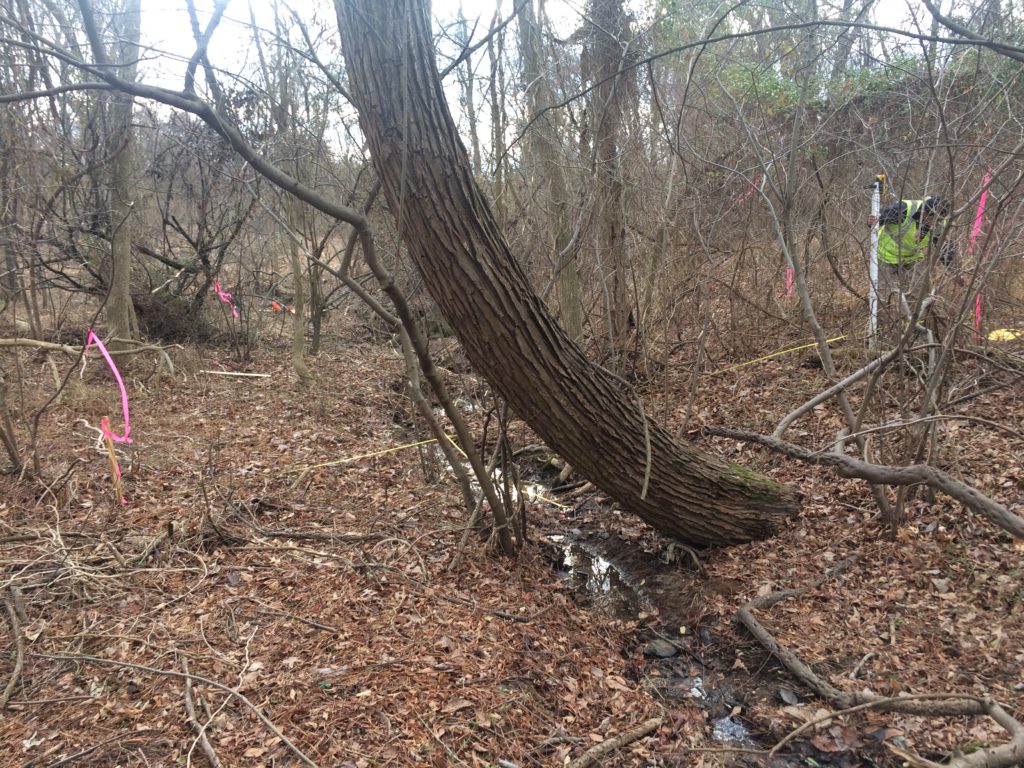
EA developed retrofit design for three existing stormwater outfalls to improve water quality treatment to assist the State Highway Administration (SHA) in meeting their nutrient reduction and impervious area treatment goals. Significant erosion is currently present in the tributary channels adjacent to the outfalls and the scope includes channel improvements to provide stable conveyance and floodplain connectivity. The outfalls and adjacent tributary channels are being retrofitted to adequately and safely convey drainage while providing credit to SHA for use in helping to meet SHA’s wasteload allocation towards the Chesapeake Bay total maximum daily load. Restoration is proposed to 2,285 linear feet of outfall and tributary channel which provides 22.9 acres of impervious acre equivalent. SHA stormwater management standards are being followed for the designs.
A hydrologic analysis was performed for key study points at each outfall and tributary. An existing stormwater management facility adjacent to an outfall was analyzed to determine flow characteristics for the 100-year design storm for use in appropriately sizing structures, outfall, and channel bed material. A hydraulic analysis was performed using HEC-RAS to evaluate channel stability for existing and proposed conditions including the 100-year storm. Results from the hydraulic analysis and the geomorphic assessment were used in the design of natural channel features, such as step pools, riffle and pool sequences, and plunge pools. Grade control structures were designed to stabilize stream bed and banks by reducing stream slope and flow velocity. Design included a desktop evaluation and visual assessment of the outfalls and tributaries to determine the project boundary to estimate potential restoration credits. Project constraints such as steep topography, utilities, wetlands, and specimen trees were identified and a geomorphic assessment was performed. These data were utilized to prepare a concept that addresses the project goals while minimizing environmental resource impacts. Photographs were taken at each site to document current conditions of the stream and surrounding riparian areas. During this phase, EA identified additional stream lengths and outfalls not initially identified by SHA as part of the project that were deficient and opportunities for additional total maximum daily load crediting. After review by SHA, the additional outfall and stream lengths were added to the project scope.
Construction plans prepared by EA include existing conditions and demolition plan, proposed grading, applicable outfall and channel details for construction, details of instream structures, cross-sections and profiles, and traffic control plans. EA prepared a detailed design report, construction specifications, and Engineer’s Probable Cost Estimate. Bid phase services will be provided to assist SHA through the bidding process. Additionally, construction phase services, including part-time inspections by a stream specialist, will be performed when the project is under construction.
